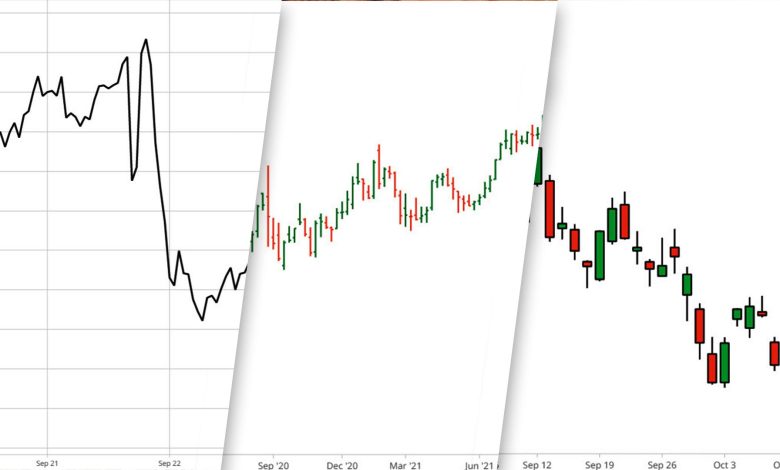Investment Volume Analysis: Spotting the Trends

- Understanding Investment Volume Analysis
- The Importance of Spotting Trends in Investment Volume
- Analyzing Investment Volume for Successful Investing
- Key Indicators to Look for in Investment Volume Analysis
- Utilizing Investment Volume Data to Make Informed Decisions
- Strategies for Identifying Trends in Investment Volume
Understanding Investment Volume Analysis
Investment volume analysis is a crucial tool for investors looking to spot trends in the market. By examining the volume of trades for a particular asset over a specific period, investors can gain valuable insights into market sentiment and potential price movements. Understanding investment volume analysis involves looking at the relationship between trading volume and price changes to identify patterns and trends.
One key aspect of investment volume analysis is identifying trends in trading volume. High trading volume can indicate increased interest in an asset, potentially signaling a bullish trend. Conversely, low trading volume may suggest waning interest and a possible reversal in price direction. By analyzing volume trends, investors can better anticipate market movements and make more informed investment decisions.
Another important factor to consider in investment volume analysis is the concept of volume confirmation. This refers to the idea that price movements are more likely to be sustained if accompanied by high trading volume. For example, a price increase on high volume is seen as more reliable than one on low volume, as it suggests strong market participation and conviction. By paying attention to volume confirmation, investors can filter out false signals and focus on more reliable trends.
In addition to trend identification and volume confirmation, investors should also consider volume spikes in their analysis. These sudden surges in trading volume can indicate significant market events or shifts in sentiment, potentially leading to sharp price movements. By monitoring volume spikes, investors can stay ahead of the curve and capitalize on emerging opportunities in the market.
Overall, understanding investment volume analysis is essential for investors looking to navigate the complexities of the financial markets. By analyzing trading volume, identifying trends, and paying attention to volume confirmation and spikes, investors can gain a deeper understanding of market dynamics and make more informed investment decisions.
The Importance of Spotting Trends in Investment Volume
Spotting trends in investment volume is crucial for successful investment analysis and decision-making. By closely monitoring the volume of investments in various markets, investors can gain valuable insights into the direction in which the market is moving. This information can help investors anticipate potential changes in market conditions and adjust their investment strategies accordingly.
One of the key benefits of tracking investment volume trends is the ability to identify emerging opportunities before they become widely recognized. By spotting trends early on, investors can position themselves to take advantage of potential market shifts and capitalize on new investment opportunities. This proactive approach can help investors stay ahead of the curve and maximize their returns.
Additionally, analyzing investment volume trends can provide valuable information about market sentiment and investor behavior. By understanding how investment volumes fluctuate over time, investors can gain insights into market dynamics and investor psychology. This knowledge can help investors make more informed decisions and better navigate the complexities of the financial markets.
Analyzing Investment Volume for Successful Investing
When it comes to successful investing, analyzing investment volume is crucial. By examining the volume of trades for a particular asset, investors can spot trends and make informed decisions about when to buy or sell. Investment volume analysis involves looking at the number of shares or contracts traded over a specific period, such as a day, week, or month.
One key metric to consider when analyzing investment volume is the average trading volume. This metric provides insight into how actively a particular asset is being traded. High average trading volume can indicate strong interest in an asset, while low average trading volume may suggest a lack of interest or liquidity.
Another important aspect of investment volume analysis is comparing current trading volume to historical trading volume. By looking at how current volume levels compare to past levels, investors can identify potential trends or shifts in market sentiment. For example, a sudden spike in trading volume may indicate a significant event or news announcement that is impacting the asset’s price.
Overall, analyzing investment volume can help investors make more informed decisions and better understand market dynamics. By paying attention to trading volume trends, investors can gain valuable insights into market sentiment and potential price movements. Incorporating investment volume analysis into your investment strategy can be a valuable tool for successful investing.
Key Indicators to Look for in Investment Volume Analysis
When conducting investment volume analysis, it is crucial to pay attention to key indicators that can help you spot trends in the market. By analyzing these indicators, investors can make informed decisions about where to allocate their resources.
- One important indicator to look for is trading volume, which refers to the number of shares or contracts traded in a given period. High trading volume can indicate increased interest in a particular asset, while low trading volume may suggest a lack of interest.
- Another key indicator is price movement, which shows how the price of an asset is changing over time. By analyzing price movement alongside trading volume, investors can gain insights into market sentiment and potential future trends.
- Additionally, analyzing the depth of market, which shows the number of buy and sell orders at different price levels, can provide valuable information about market liquidity and potential price movements.
- Furthermore, monitoring the bid-ask spread, which is the difference between the highest price a buyer is willing to pay and the lowest price a seller is willing to accept, can help investors gauge market volatility and liquidity.
- Lastly, tracking the number of new highs and lows in the market can give investors a sense of market breadth and whether the trend is widespread or limited to specific assets.
By paying attention to these key indicators in investment volume analysis, investors can gain a better understanding of market dynamics and make more informed investment decisions.
Utilizing Investment Volume Data to Make Informed Decisions
When it comes to making informed decisions in the world of investments, utilizing investment volume data can be a valuable tool. By analyzing the volume of trades for a particular asset, investors can gain insights into market trends and potential opportunities. Understanding how investment volume fluctuates over time can help investors identify patterns and make predictions about future price movements.
One way to utilize investment volume data is to look for trends in trading volume. By tracking the volume of trades for a specific asset over a period of time, investors can identify whether there is increasing or decreasing interest in that asset. High trading volume can indicate strong market interest, while low trading volume may suggest a lack of interest or uncertainty among investors.
Another way to use investment volume data is to compare it with price movements. By analyzing how investment volume changes in relation to price movements, investors can gain a better understanding of market dynamics. For example, a significant increase in trading volume accompanied by a price spike could indicate a bullish trend, while a decrease in volume with a price drop may signal a bearish trend.
Overall, utilizing investment volume data can provide valuable insights for investors looking to make informed decisions. By analyzing trends in trading volume and comparing it with price movements, investors can better understand market dynamics and potentially spot profitable opportunities.
Strategies for Identifying Trends in Investment Volume
When it comes to analyzing investment volume, one key aspect is identifying trends that can help investors make informed decisions. There are several strategies that can be employed to spot these trends:
- Utilize technical analysis tools such as moving averages and trend lines to identify patterns in investment volume over time.
- Monitor market news and economic indicators that may impact investment volume, such as interest rate changes or geopolitical events.
- Compare investment volume across different asset classes or sectors to see where the most significant trends are occurring.
- Look for correlations between investment volume and other factors, such as price movements or trading volume, to gain insights into potential trends.
- Consider using quantitative analysis techniques, such as regression analysis or machine learning algorithms, to identify patterns in investment volume data.
By employing these strategies, investors can gain a better understanding of the trends in investment volume and make more informed decisions about their investment portfolios.



